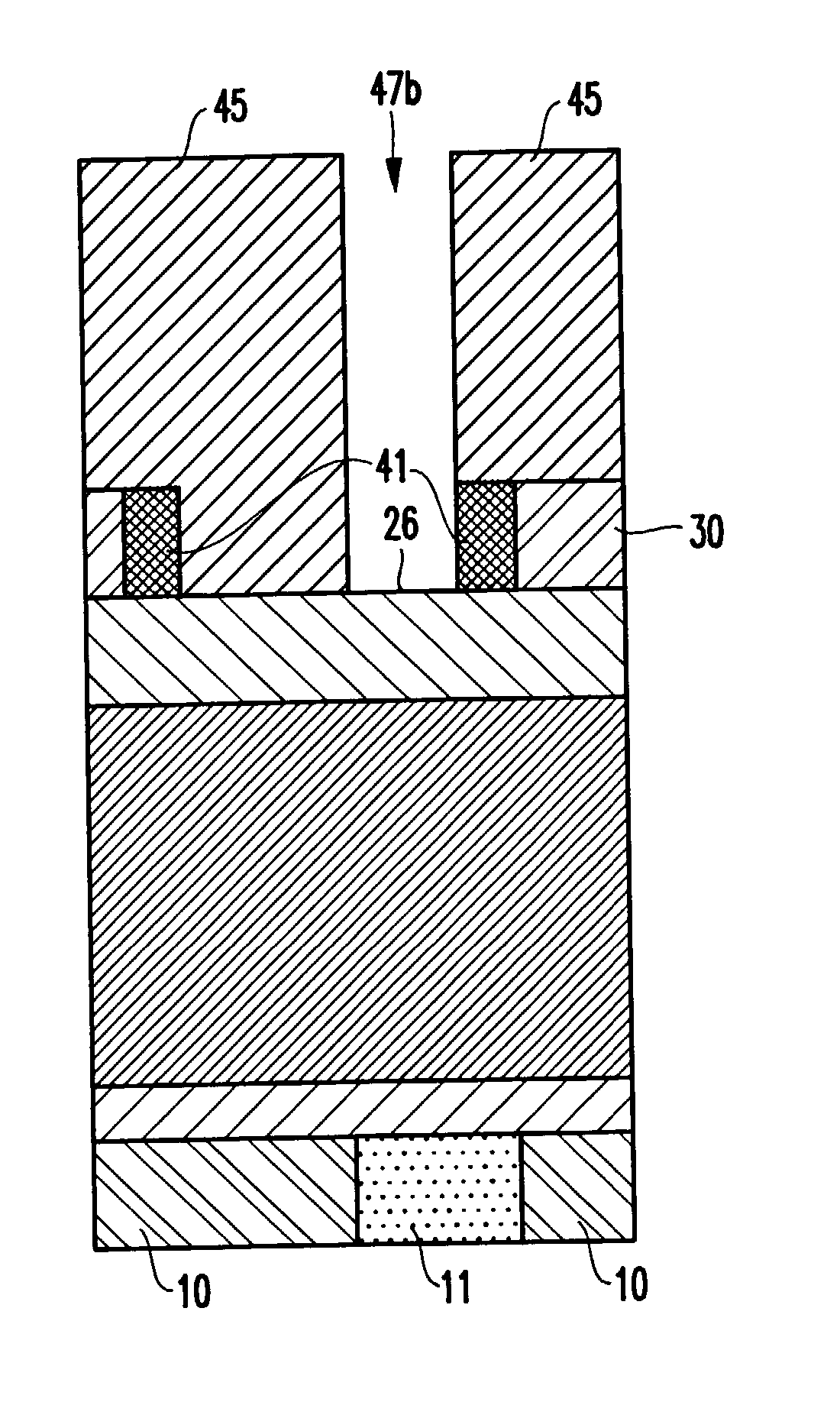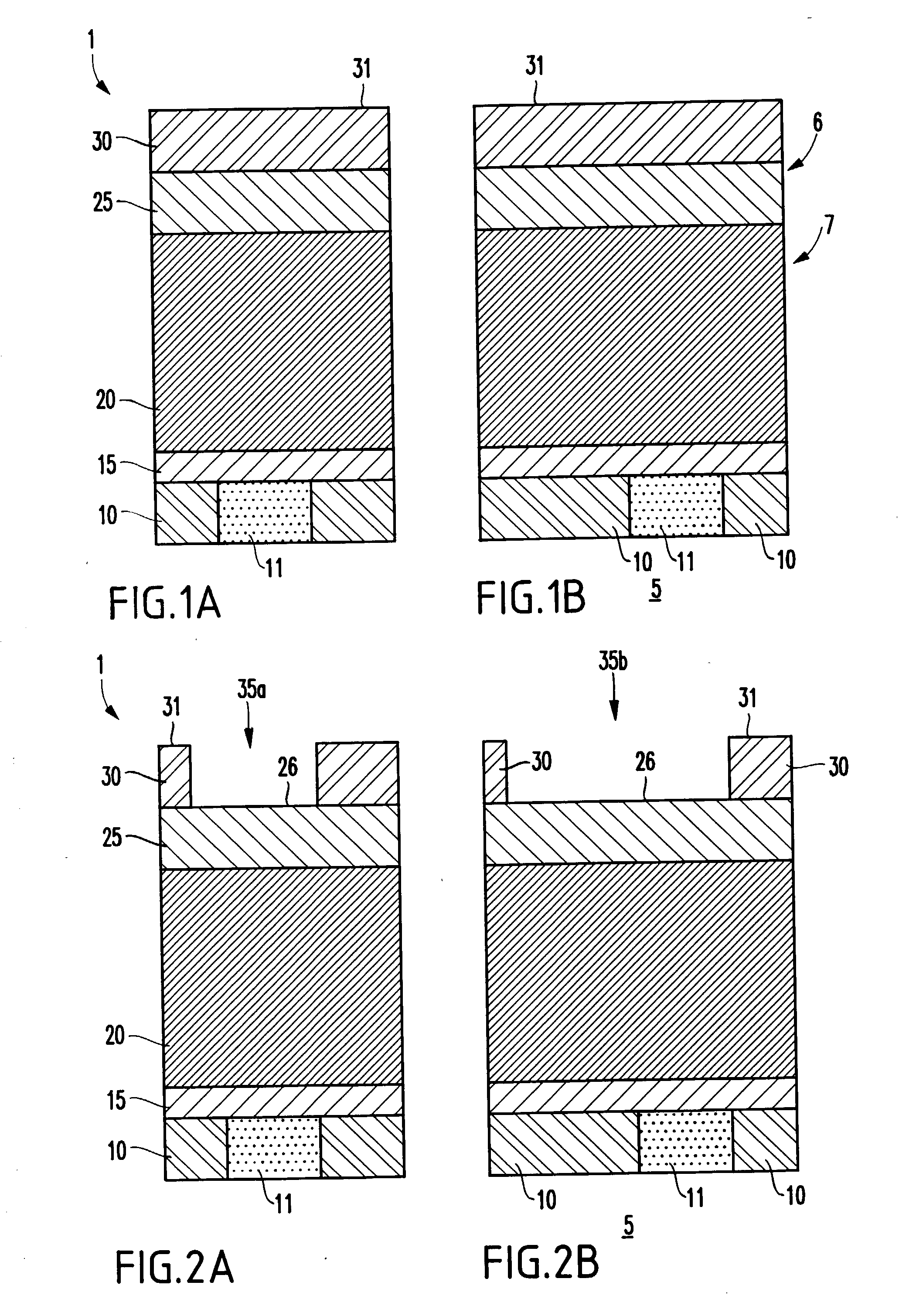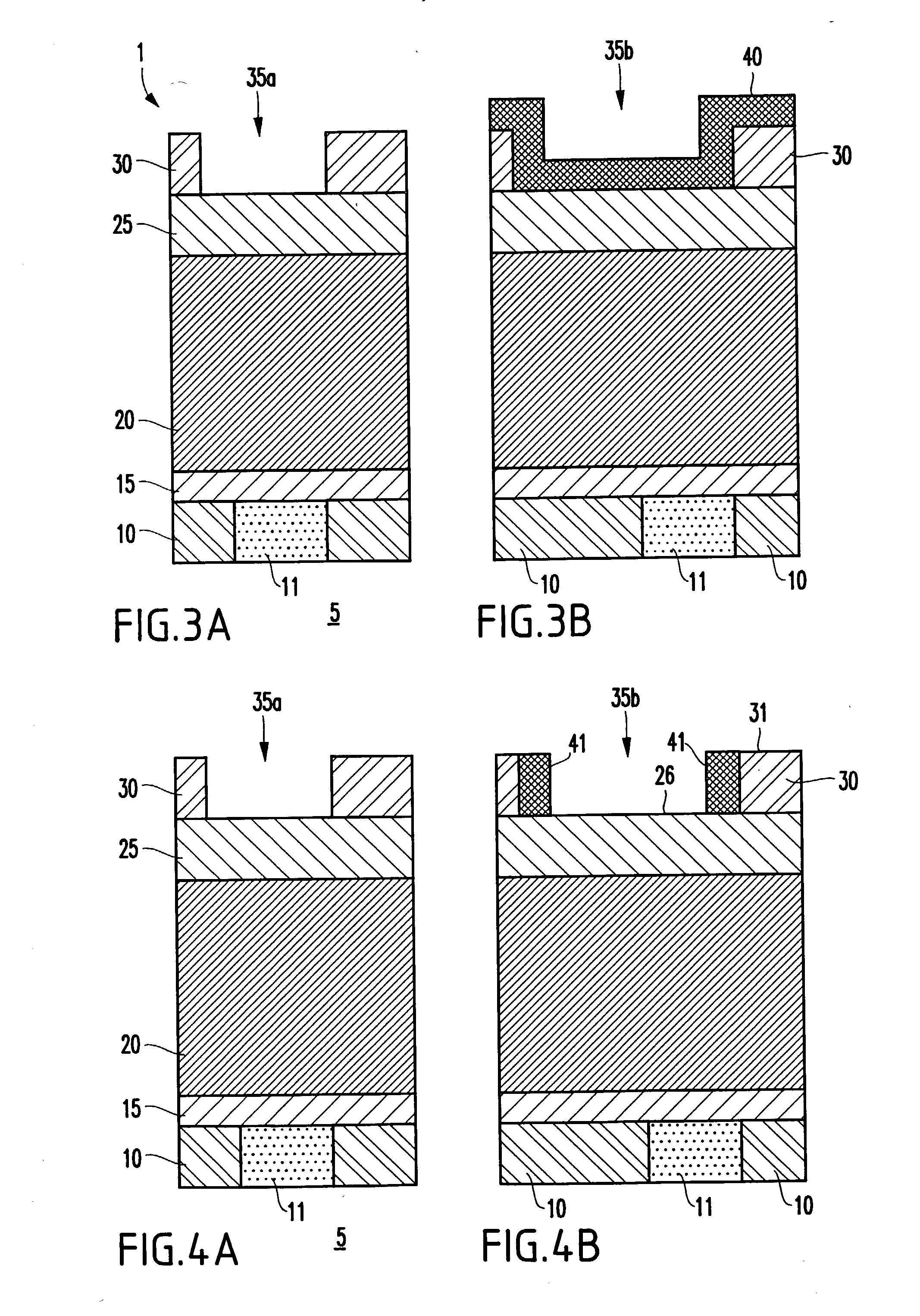Sacrificial metal spacer damascene process
a technology of metal spacer and damascene, which is applied in the direction of semiconductor/solid-state device manufacturing, basic electric elements, electric apparatus, etc., can solve the problems of poor dielectric properties, degraded contact interface properties, and difficult materials such as polyarylenes (pae)
- Summary
- Abstract
- Description
- Claims
- Application Information
AI Technical Summary
Benefits of technology
Problems solved by technology
Method used
Image
Examples
first embodiment
[0049] In a first embodiment shown in FIGS. 1A-12B metal spacers are applied along the sidewalls of a low-k dielectric layer, such as SiLK.RTM.. In this trough first, via second dual damascene integration scheme, the troughs are defined into a hardmask, the vias are defined and etched into the SiLK.RTM., and the trough hardmask pattern is used as a mask to etch the troughs into the SiLK.RTM.. The metal spacer, which is preferably tungsten, but may comprise other materials, such as tantalum nitride, adds a systematic trim to the trough opening which increases the lithographic process window.
[0050] FIGS. 1A, 2A, 3A, 4A, 5A, 6A, 7A, 8A, 9A, 10A, 11A, and 12A illustrate processing without the inventive spacers 41, while FIGS. 1B, 2B, 3B, 4B, 5B, 6B, 7B, 8B, 9B, 10B, 11B, and 12B illustrate the advantages produced by the spacers. The following discussion explains both series of "A" and "B" Figures similarly, except where differences exist. FIG. 1 shows a first embodiment of the present i...
second embodiment
[0061] A second embodiment is shown in FIGS. 13 through 26. This embodiment illustrates the structure and method of fabricating dual damascene troughs / vias into an oxide / PAE stack. The advantage of using a dual oxide / PAE stack is that the oxide can provide mechanical support to the wires fabricated in PAE, the oxide acts as an oxygen / water diffusion barrier, and also the oxide is a very efficient thermal conductor. Additionally, the adhesion of the metallized via bottom to the underlying metal is improved by fabricating it in oxide rather than in PAE.
[0062] FIG. 13 shows a partially completed integrated circuit device 101 comprising a plurality of insulator layers 107 stacked on a substrate 105. A metallization layer 110 is deposited over the substrate 105. The metallization layer 110 comprises wiring conductors 111 therein. Above the metallization layer 110 and wiring conductors 111 is a first nitride insulating barrier layer 115. Above the first nitride layer 115 is an insulating ...
third embodiment
[0079] FIG. 33 illustrates a flow diagram of the present invention, which describes depositing a liner 275, 285 into the vias 235b of the dual damascene interconnect device 201. First, the vias / troughs 235b of the integrated circuit device 201 are cleaned 600. The next step involves optionally performing 605 one of a reactive ion etching and an argon sputter cleaning process. Then, a plurality of metal layers 275, 285 are deposited 610 over the vias / troughs 235b. Finally, copper is deposited 615 in the vias / troughs 235b.
[0080] There are several benefits of the present invention. For example, the present invention provides a novel structure and method for forming a sacrificial metal spacer dual damascene structure as well as a single damascene structure. Also, the present invention provides a new and improved technique of dual damascene and single damascene processing which overcomes the limitations of the conventional designs. Additionally, the present invention improves the dual da...
PUM
 Login to View More
Login to View More Abstract
Description
Claims
Application Information
 Login to View More
Login to View More - R&D
- Intellectual Property
- Life Sciences
- Materials
- Tech Scout
- Unparalleled Data Quality
- Higher Quality Content
- 60% Fewer Hallucinations
Browse by: Latest US Patents, China's latest patents, Technical Efficacy Thesaurus, Application Domain, Technology Topic, Popular Technical Reports.
© 2025 PatSnap. All rights reserved.Legal|Privacy policy|Modern Slavery Act Transparency Statement|Sitemap|About US| Contact US: help@patsnap.com



